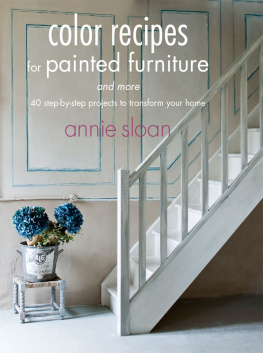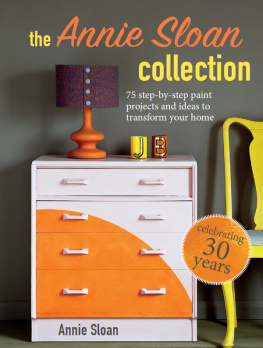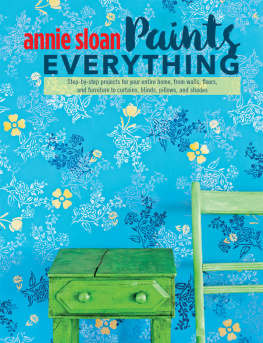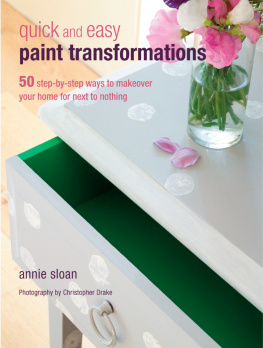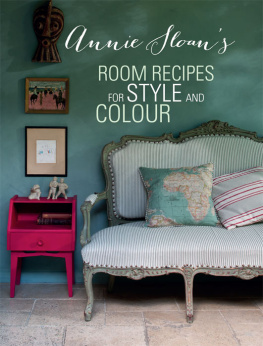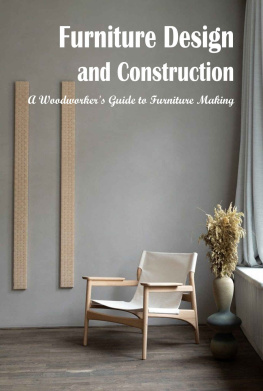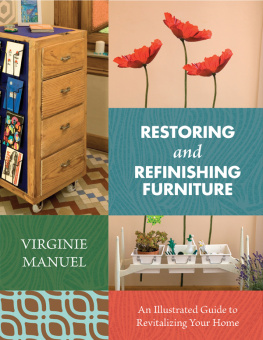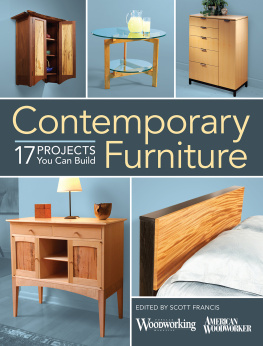
COLOUR RECIPES
FOR PAINTED FURNITURE
AND MORE
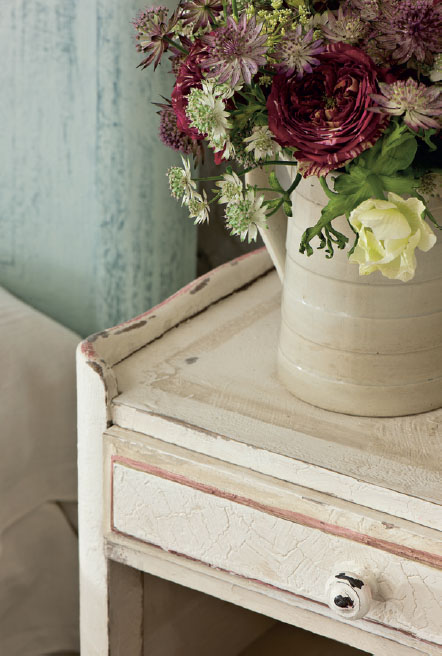
COLOUR RECIPES
FOR PAINTED FURNITURE
AND MORE
40 STEP-BY-STEP PROJECTS TO TRANSFORM YOUR HOME

ANNIE SLOAN

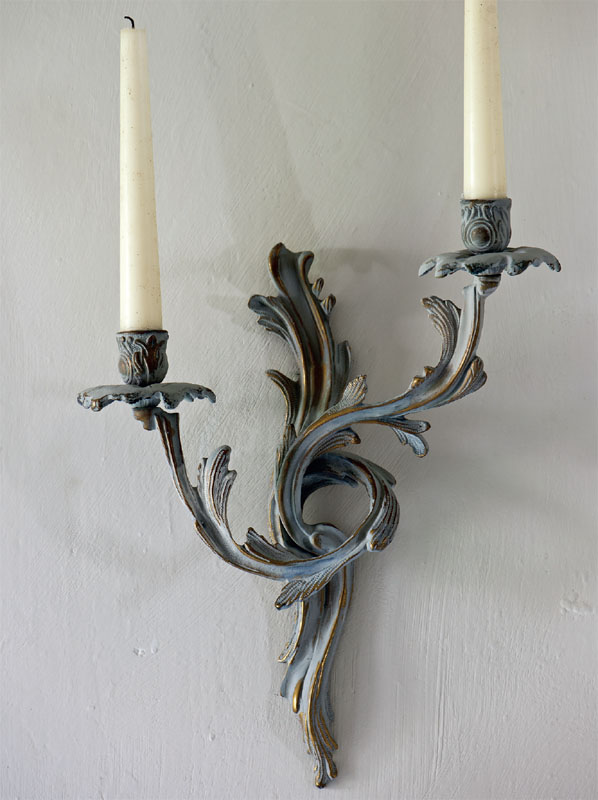
Published in 2013 by CICO Books
An imprint of Ryland Peters & Small Ltd
2021 Jockeys Fields,
London WC1R 4BW
www.rylandpeters.com
20 19 18 17 16 15 14 13 12
Text Annie Sloan 2013
Design and photography CICO Books 2013
The authors moral rights have been asserted. All rights reserved. No part of this publication may be reproduced, stored in a retrieval system, or transmitted in any form or by any means, electronic, mechanical, photocopying, or otherwise, without the prior permission of the publisher.
The Chalk Paint trademark is owned by Annie Sloan Interiors Ltd. and is registered in the United States Patent and Trademark Office.
A CIP catalogue record for this book is available from the British Library.
eISBN 978 1 78249 501 7
ISBN 978 1 782490 32 6
Managing editor: Gillian Haslam
Copy editor: Helen Ridge
Designer: Christine Wood
Photographer: Christopher Drake
contents
Over the years I have written many books, but this one is very personal as it charts the renovation of our farmhouse in northern France. Although we have owned the property for more than 20 years, over the past 12 months we have extended the house and redecorated throughout. This has given me a wonderful opportunity to experiment with new techniques (such as using my paint to dye fabrics) and the perfect excuse to buy more furniture from local markets and village fairs.
We chose the house because it is easy to get to from our home in Oxford. It takes an hour to reach the port on the south coast of England, and from there we catch the midnight ferry. After sleeping overnight on-board, we arrive in France in the early morning, with just another hours drive ahead of us. The house is situated in the middle of the green and rolling Normandy countryside, an area renowned for its milk and cream, from the famous Normandy cows, and also for its apples.
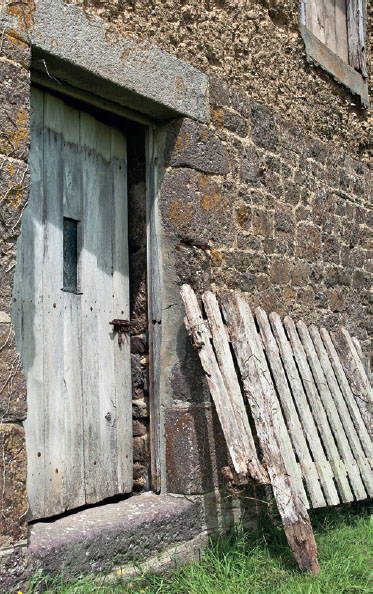
The farmhouse, built from stones with cob (mud and straw) walls, has other outbuildings which we currently use as storage. I particularly love this old oak door, and am planning to restore and reinstate the old fence.
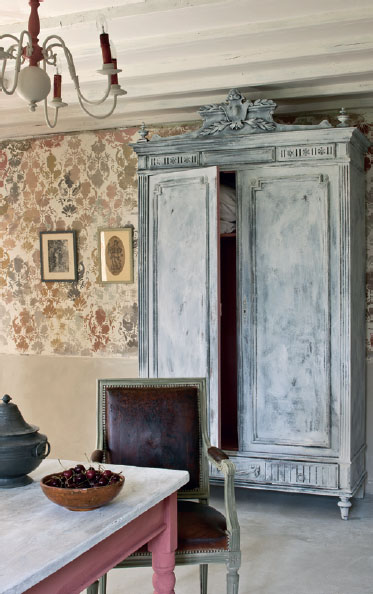
The country kitchen is next to the Swedish-style room, so it was important to make certain that the styles flowed easily. I have taken a color from one room and used it in the next.
There are orchards everywhere, and cider and calvados, the delicious apple brandy, are produced in abundance.
The house started as a retreat for the whole family, where the children could run about and do as they liked. We stayed there every summer, spending our days on the nearby beaches or in the surrounding countryside. The children played in the fields of tall maize and rode their bikes along the empty roads. They searched for glowworms, played in the tiny stream, made hideouts in the attics and sheds, and generally had a good time. We spent Christmases there, too, and even though it was very cold, we would soon warm up sitting by the big log fire and have tremendous fun.
The house is old. One of the beams in the kitchen has the date 1776 carved into the wood, although parts of the building may actually be older than that. On the ground floor, the walls are made of stone, with mud walls above, which was the traditional way to build houses all over Britain and Europe. The previous owners had tried their hand at modernization, and we spent ages removing the hardboard and plastic they had used to cover the ancient wooden beams, as well as scraping green gloss paint from the walls.
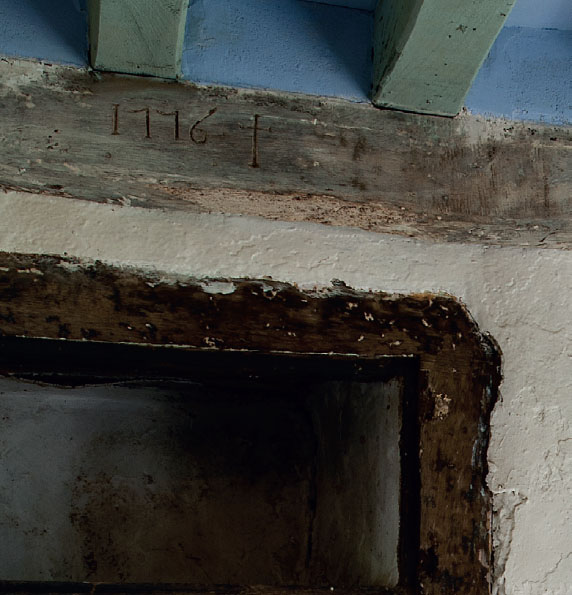
Carved into one of the ceiling beams in the kitchen is the date 1776, the year that America gained her independence from Britain. Although this is a great age in itself, some parts of the house may be even older.
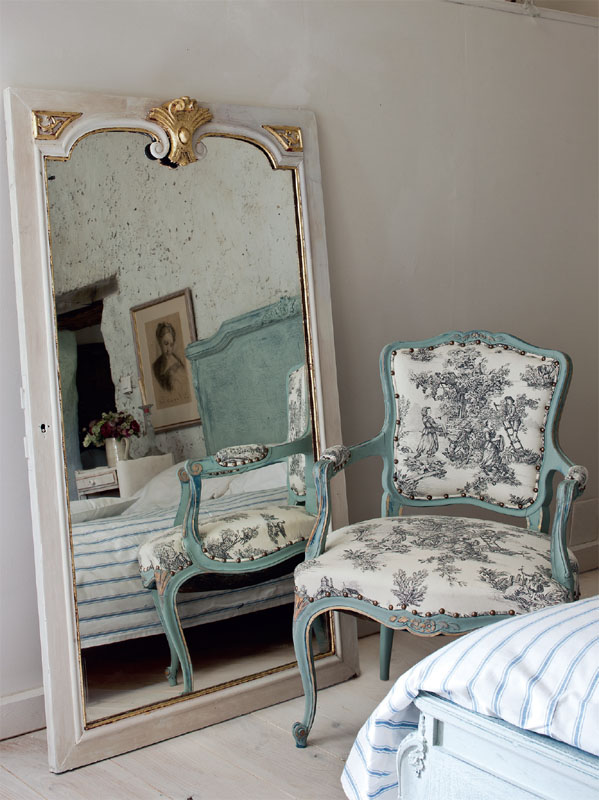
All the furniture in this bedroom has been bought in France, although I see similar pieces all over the world. Scouring flea markets and visiting secondhand furniture stores for pieces to paint is great fun, and I'll continue to do this with the emphasis now on searching for paintings, prints, and the finishing touches.
As the house is located in the heart of the French countryside, I chose to decorate it in a predominantly French rustic style. But, as you would imagine, I have also included other influences that continue to inspire me. When I decorate a room, I start with one large item of furniture as the pivotal piece against which everything else is measured. Smaller pieces are then added as I find them and the rooms are constantly evolving. I dress a room until it feels right, which is why you may notice curtains hanging at a window in one photograph but in another shot of the same room there are none.
I have divided the book into six chapters, with the first on how to use color and make up your own using my paints. This is followed by chapters on each of the decorating styles that are important to me: French Style, Boho Chic, Swedish Style, Country, and Modern Contemporary. I have broadly allocated a room for each of these styles but, naturally, there is some overlap, so you will find a Boho Chic painted chandelier in the Swedish room, for instance. Colors in one room will also feature in another. It is in this way that the rooms work together and always feel connected.

As you flick through the projects in this book, you'll see that none of them calls for specialist equipment. Have a few pots of paint in your chosen colors, some brushes, and clean rags to hand and you are all set to get started.
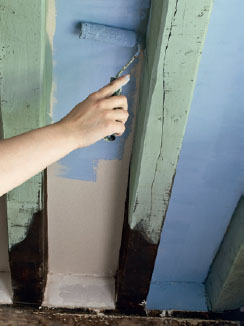
paint
The starting point is to choose the right paint for the job. This will make painting your furniture an enjoyable experience because the paint will be responsive and you will be able to work in a practical, flexible way. There are many house paints on the market, but I believe that my purpose-made paint, Chalk Paint (see for stockists), is the best for the projects in this book. The paint has a very matte texture and absorbs wax easily, and has been specially created to be used in a huge variety of waysfor example, as a wash, with or without texture, or applied thickly. And one of the great bonuses with this paint is that there is no need to prime the furniture or rub it down in preparation, meaning you can start painting easily and quickly while you have the urge. The paint, despite being water based, even mixes easily with the solvent-based wax too, so you can color the final finish to get the exact color you want to achieve.
Next page
